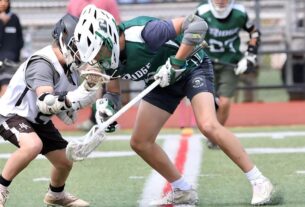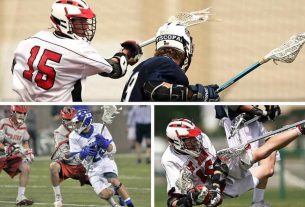Golf courses typically avoid fake grass since it impacts playability and tradition. It lacks natural variation and challenge of real grass.
Golf enthusiasts often seek the authentic experience of playing on real grass. Synthetic grass cannot replicate the variety in texture and response of real turf. Keeping tradition alive, golf courses maintain the sport’s natural beauty.
In order to experience true golf, you need to interact with your clubs, balls, and the natural grass. While fake grass requires less maintenance, it fails to create the dynamic environment that players expect. Therefore, the choice of real grass reflects both tradition and a commitment to quality.
The Appeal Of Real Grass
Many golfers wonder why real grass is preferred over fake grass. In addition to making the game more enjoyable, real grass makes the courses beautiful. We’ll explore the nature aesthetics and environmental benefits of this.
Natural Aesthetics
The beauty of real grass enhances golf courses. With each season, its color and texture change. Playing golf enhances golfers’ connection to nature. A few key points:
- Real grass changes colors with seasons, making each game unique.
- It feels soft and natural underfoot, adding to the enjoyment.
- The variety of grass types can alter the difficulty of a hole, adding strategy.
Golfers often praise the authentic feel of the turf, which fake grass can’t match. The natural landscape also attracts wildlife, adding to the beauty and ecological diversity of the course.
Environmental Benefits
Using real grass on golf courses has important environmental advantages. It helps cool the environment, reduces carbon dioxide, and supports biodiversity. Let’s break this down:
| Benefit | Description |
| Cooling effect | Real grass helps lower temperatures in its surroundings. |
| CO2 Reduction | Grass absorbs carbon dioxide, reducing greenhouse gases. |
| Biodiversity | Supports a variety of life forms, contributing to ecosystem health. |
Real grass prevents erosion and filters water. Soil and water remain clean through these processes. The environmental benefits of real grass make it an obvious choice for golf courses.

Challenges Of Fake Grass
Many golf courses prefer real grass over fake grass. This choice involves many challenges. Let’s explore why fake grass isn’t widely used on golf courses and the challenges it presents.
Durability And Maintenance
Fake grass, also known as artificial turf, may seem like a good choice at first. It stays green all year and doesn’t need water. But, it’s not that simple. Here are some points to consider:
- Artificial turf can wear out faster in places with a lot of foot traffic.
- It needs cleaning to remove leaves and other debris.
- Getting too hot is a problem in sunny areas, making play uncomfortable.
- Repairs are tricky and can be costly if the turf tears or gets damaged.
Even though it doesn’t grow, fake grass requires care to look its best and be safe for players.
Playability And Feel
Golfers often talk about the feel of the game. Real grass plays a big part in this. Here’s why:
- Real grass has a natural variability that affects how the ball moves.
- Artificial turf doesn’t let the ball roll or bounce in the same way.
- Golfers find the experience of playing on real grass more satisfying.
- Feedback from shots is different on fake grass, which can frustrate players.
The feel of the game on real grass is hard to duplicate with artificial options. This is why many golf courses stick to natural grass despite the challenges.
Cost Considerations
Golf courses often use natural grass instead of fake grass. Money often plays a role. The initial investment and long-term expenses are key costs. Discover why real grass remains a top choice.
Initial Investment
Golf courses require a lot of land. Covering this land with fake grass is pricey. Here’s what they must pay for:
- Buying synthetic turf: This can cost much more than seeding with real grass.
- Ground preparation: The soil needs special work to hold the fake grass.
- Installation: Professionals must put the turf down. This adds to the bill.
Also, real grass grows back on its own. Fake grass does not. Replacing worn areas of synthetic turf is another cost. This makes the upfront money needed very high.
Long-term Expenses
Costs don’t stop after putting in fake grass. Here’s what golf courses must think about for the future:
| Expense Type | Real Grass | Fake Grass |
| Maintenance | Regular cutting and watering | Cleaning and repairs |
| Durability | Can heal naturally over time | May need full replacement |
| Playability | Changes with weather and seasons | Stays the same, can affect the game |
There are ongoing costs associated with real grass, such as mowing and watering. However, fake grass needs to be cleaned. Over time, these costs add up. Eventually, some think real grass will be cheaper to maintain.
Environmental Impact
Green, well-maintained grass makes a golf course beautiful. People wonder why golf courses don’t use fake grass. Our environment is affected by real grass. Considering water use and ecosystem benefits, we explore the reasons why natural grass is the best choice.
Water Conservation
Grass on golf courses needs a lot of water. Every day, real grass drinks water. When water is scarce, this is a problem. Fake grass doesn’t need water, so why not use it? The answer is not simple. Here are some reasons:
- Real grass can store water, which helps in dry times.
- Fake grass can lead to more runoff during rain. This can cause flooding.
- Grass cooling effect. Real grass cools the air when it uses water. Fake grass cannot do this.
It’s clear that real grass has benefits. But it uses a lot of water. There are ways to save water on golf courses. Choose grass types that need less water. Reduce waste by watering the grass at the right time.
Ecosystem Support
A golf course is more than a place to play. It is a home for many small creatures. Real grass supports life. It gives food and a place to live for bugs, birds, and other animals. Here are some ways how real grass helps:
- It creates oxygen for us to breathe.
- Real grass has roots that hold soil. This prevents erosion.
- It offers a space for pollinators like bees.
Choosing real grass helps our little friends. It keeps the balance in nature. Golf courses with real grass can be safe havens for wildlife. They can act like mini-parks within cities. This helps both the animals and us.

Player Preferences
There are many golf courses that prefer natural grass. Golfers’ love for the game is often influenced by playing on real grass. There are many reasons for this preference, including the feel of the turf underfoot and the ball’s interaction with the natural landscape. Discover why players rely on real grass and its sensations so much.
Authentic Experience
Golfers seek the real thing when they step onto a course. Natural grass provides a unique challenge with its variable textures and conditions. Consider these points:
- Each course is unique due to its grass type and care.
- Real grass changes with the seasons, adding variety.
- Golf history is rich with famous grass courses, adding to the game’s tradition.
Also, golf tournaments are often held on famed natural grass courses. It creates a sense of reverence and aspiration. Having the same golfing surface as their heroes provides a challenge.
Tactile Sensations
The feel of the ground plays a big part in the golfing experience. Here’s why:
- Swinging a club on real grass feels different than on artificial turf.
- Grass cushions the feet, which can affect a player’s stance and swing.
- Reading the green is a skill that relies on natural grass characteristics.
Often, players talk about the ‘feel’ of a course, which includes texture and firmness. Their connection to the game depends on these sensations. Their swing and approach to shots are influenced by it.
Regulatory And Tradition
There are strict rules and rich traditions in golf. There is a question as to why golf courses stick with real grass. The reasons include both rules set by the governing bodies and history.
Governing Body Standards
Golf’s governing bodies have strict rules. It matters to them where and how golf is played. Courses rarely use artificial grass. Here are some key points:
- The United States Golf Association (USGA) and The Royal and Ancient Golf Club of St Andrews (R&A) set the standards.
- They require courses to maintain a certain level of playability and challenge.
- Real grass can affect the ball’s roll, speed, and overall gameplay.
- Artificial turf might not offer the same play conditions as real turf.
- Changes to traditional play require thorough testing and acceptance.
Historical Practices
Golf is a sport with a long history. It started over 600 years ago. The tradition of playing on real grass is part of the game’s charm. Let’s look at why this tradition continues:
- Golf courses were originally links land, natural areas near the coast.
- These areas had sandy soil and grass, perfect for the game of golf.
- Players have come to love the feel and challenges of natural landscapes.
- Maintaining natural grass is seen as part of the skill of managing a course.
- Many see real grass as the best way to honor the game’s origins.

Advancements In Turf Technology
Real grass is preferred over fake grass on golf courses. There is an answer in the game’s tradition and technology. Playing surfaces should be natural. Grass provides this feeling better than synthetics. However, turf technology may change that. How turf solutions affect the game is explored in this post.
Hybrid Solutions
Modern golf courses mix real grass with fake grass. Hybrid solutions combine both. Real grass roots give a natural feel. Artificial blades are durable and low maintenance. A few key points about hybrid turf:
- Less water use, making them eco-friendly.
- Year-round green look without much work.
- Can handle heavy foot traffic during tournaments.
Hybrid turfs are still new. Many courses are watching how they work before making a switch. Golfers’ opinions also matter a lot. They love the tradition of playing on natural grass.
Performance Improvements
Modern fake grass offers better play than older kinds. The ball rolls smoothly on these surfaces. Golfers can hit the ball just like on real grass. Here are some improvements in fake turf:
| Feature | Benefit |
| Softer Texture | Feels more like real grass underfoot. |
| Better Drainage | Quick drying after rain, no muddy spots. |
| UV Protection | Keeps color from fading in the sun. |
The features help golfers enjoy synthetic grass. However, many courses and golfers use real grass. They say it’s part of the sport’s charm. Plus, real turf moves ball differently. Though technology always improves. It might even feel like real grass one day.
Future Trends
Real grass is preferred on most golf courses. It’s often a matter of tradition and the unique needs of the sport. Predictable playing surfaces are important to golfers. This thinking is changing today. A new trend points to sustainability. Check out these future trends in golf course design.
Sustainable Innovations
Golf courses need a lot of water, fertilizers, and maintenance. Synthetic grass seems a good choice. Yet, many courses have not switched. Complex reasons. Cooling is aided by real grass. It filters rainwater and provides habitat for wildlife. But innovation is booming. Eco-friendly options now exist. These include drought-resistant grass types and organic maintenance methods. Here are some examples:
- Drought-resistant turf: Needs less water and survives in tough conditions.
- Organic fertilizers: Safer for the environment than chemical options.
- Precision irrigation: Saves water by targeting specific areas that need it.
Changing Perspectives
Artificial turf is changing golfers’ views. The popularity of fake grass is growing. This shift comes from improved fake grass technology. Modern materials feel more like grass. They provide a consistent surface. They also require less upkeep, so course owners like them. Golfers value tradition and innovation. It recognizes the need for more eco-friendly practices. The changing views are as follows:
| Old Perspective | New Perspective |
| Only real grass offers the true golf experience. | Advances in fake grass can mimic real turf closely. |
| Artificial greens are easy to spot and not aesthetically pleasing. | Modern fake grass blends well and looks natural. |
| Maintenance of real grass is part of the game’s tradition. | Eco-friendly solutions can preserve the game and the planet. |
Conclusion
To summarize, traditional grass is the gold standard. Playability, authenticity, and environmental considerations matter. It can’t match the authentic golfing experience, despite its perks. Golfers and greenkeepers appreciate the game’s heritage and the natural challenges it offers.
Choosing the real deal preserves the sport’s integrity and appeal.
Read More
Which Golfers Play Better in the Rain?
Why Does Bridgestone Make Golf Balls
Best Grass Volleyball Shoes



